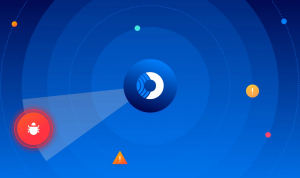Automating Apps and Users : iOS 7 Developers Gain Perks + Pitfalls
When Apple announced that iOS 7 would support automatic background updating of apps, there were some perks that immediately became apparent. The concept of auto-updating apps is a no-brainer at first glance: you don’t have to worry about keeping all your iOS apps up-to-date, letting the refreshed iOS 7 handle it in the background. The upside is that you’ll always have the latest version of the app, and you didn’t have to exit out your game of Candy Crush to do so.
But the promise of automation has its own kinks to work out, especially when we’re talking about the largely unexplored world of consumer electronics. As we’ve learned from the software-led trends in enterprise IT, automation simplifies operational obligations on the infrastructure side, and increases usability for end users. However, it’s the developer that’s left holding the ball, bridging the gaps between increasingly intelligent machines, their software, and the consumer.
When automation helps users
According to one developer, iOS 7’s ability to auto-update your apps will make them appear to run faster. On the developer side, the auto-update feature leverages iOS 7’s new capabilities to extend more control over the way data is accessed through an app, something that likely wasn’t optimized for third party developers in previous versions. The result is an improved user experience, namely that your apps will appear to operate more quickly.
“Apps that rely on a lot of server data (e.g., Facebook, Twitter, Springpad) will be perceived as faster due to Apple’s background services that keep your app up to date even when the user isn’t currently using the app,” explains Springpad’s lead iOS developer Joey Fernandez.
![]() “iOS 7 background services enhancements at third party development scale will improve the experience of apps that historically have had spinners or other loading motifs, as well as provide improvements in battery life and performance (e.g., Apple’s Mail.app for example has always been able to fetch data in the background but I’m sure it was an expensive cost to do so and not something optimized for use by every third party developer),” Fernandez says.
“iOS 7 background services enhancements at third party development scale will improve the experience of apps that historically have had spinners or other loading motifs, as well as provide improvements in battery life and performance (e.g., Apple’s Mail.app for example has always been able to fetch data in the background but I’m sure it was an expensive cost to do so and not something optimized for use by every third party developer),” Fernandez says.
This is a great development for the personal cloud, leveraging improved data management processes to deliver a better user experience.
“People who use apps don’t know why they’re staring at a spinner after they hit a button, they just get frustrated, so reducing whatever bottleneck is causing it (network, UI, hardware, OS) — that’s good,” says Kyt Dotson, our DevOps Editor. “Apparently iOS7 now has a better design for letting apps run in the background to keep themselves updated so that the data is there when the user wants it. One industry term for this is ‘prefetch.'”
When automation hinders
Understanding the full capabilities from a developer standpoint is key to the user’s experience, as prefetching data can cause problems when automation gets involved. For those apps that aren’t optimizing for iOS 7’s new features or are running into other hiccups, the potential for data loss is heightened, as one journalist experienced. Adrian Kingsley-Hughes shares his story on ZDNet:
“While in my experience a good 99.9 percent of iOS app updates go without a hitch, I have had things go wrong. Two apps I use have in the past had problems with new updates wreaking the data stored on my device, forcing me to recover data from a backup. Those two apps are the password manager SplashID and Pocket Informant organizer. These two apps create and store a lot of information on the iPhone and iPad, and major updates involve making changes to that stored data. And any time major changes are made to data, there’s a chance that things can go wrong.”
Developers bridge the automation gap
As Kingsley-Hughes goes on to note, some app developers are doing what they can to help you avert crisis. SplashID has already amended its app to display a message before you update, cautioning you to backup your personal data. The responsibility of educating the consumer is once again left to the developer, working hard to ensure the usability of his app. Fortunately for the developer, Apple’s included some other helpful updates to iOS 7.
The following observations are from Springpad’s Fernandez:
iOS 7 code includes many small but beneficial improvements to enhance the development process.
- Xcode (the app you code in) itself has been updated; it’s dramatically faster and more stable (huge value)
- Many user interface widgets have been polished and modernized with a great look and feel
- Prior to iOS 7, Springpad like most other apps with intricate UIs had to custom-build widgets to achieve effects offered for ‘free’ in iOS 7
- Most widgets include many new options for customization in terms of colors, patterns and sizing
Just like “mobile first” became a theme/mantra with iOS/Android proliferation, I think iOS 7 will lead to another leap in KISS, including:
- Less shadows, gradients, simpler color palettes
- Less chrome for toolbars and buttons, i.e., letting the content speak for itself (e.g. a photo doesn’t need a frame/border, just show the photo)
A message from John Furrier, co-founder of SiliconANGLE:
Your vote of support is important to us and it helps us keep the content FREE.
One click below supports our mission to provide free, deep, and relevant content.
Join our community on YouTube
Join the community that includes more than 15,000 #CubeAlumni experts, including Amazon.com CEO Andy Jassy, Dell Technologies founder and CEO Michael Dell, Intel CEO Pat Gelsinger, and many more luminaries and experts.
THANK YOU









